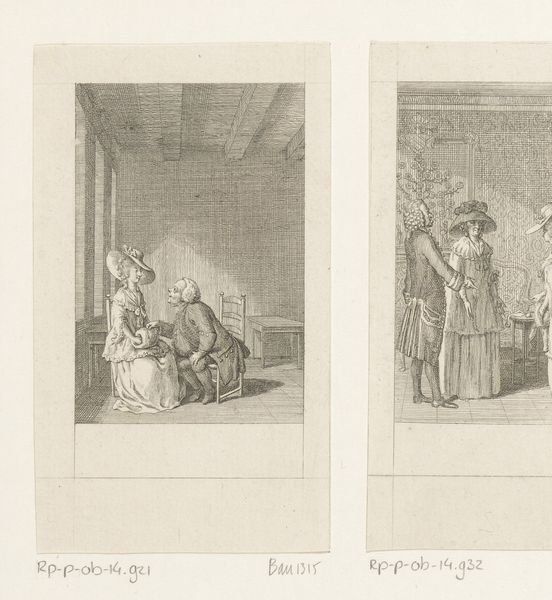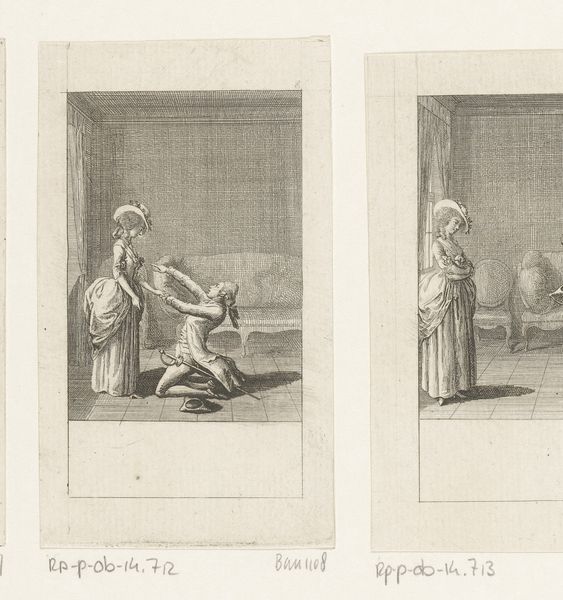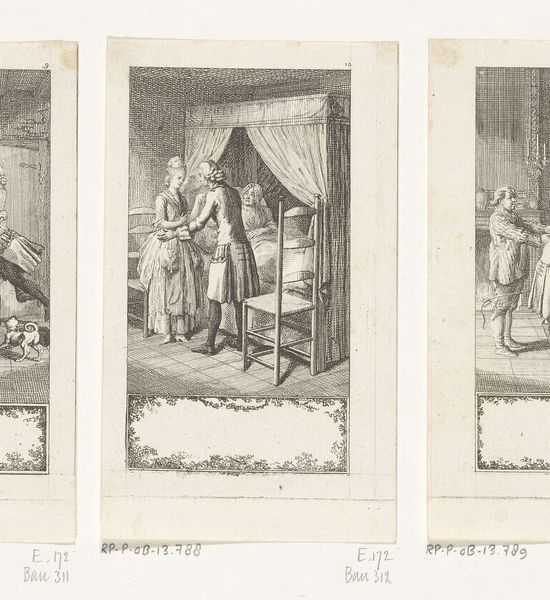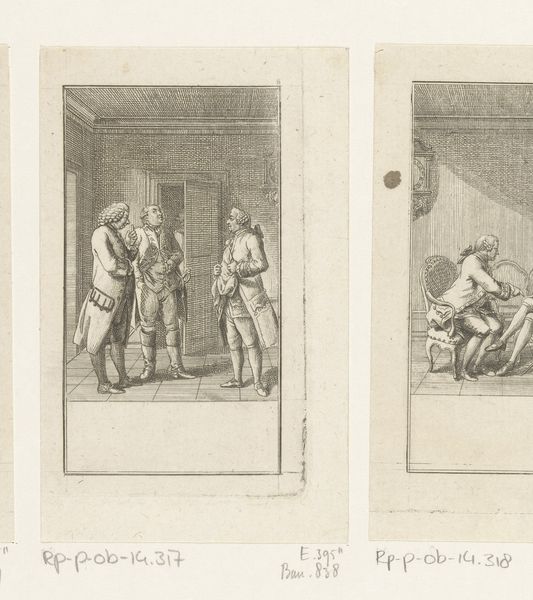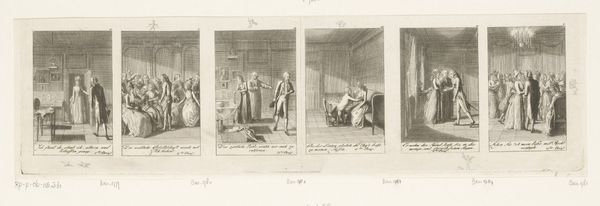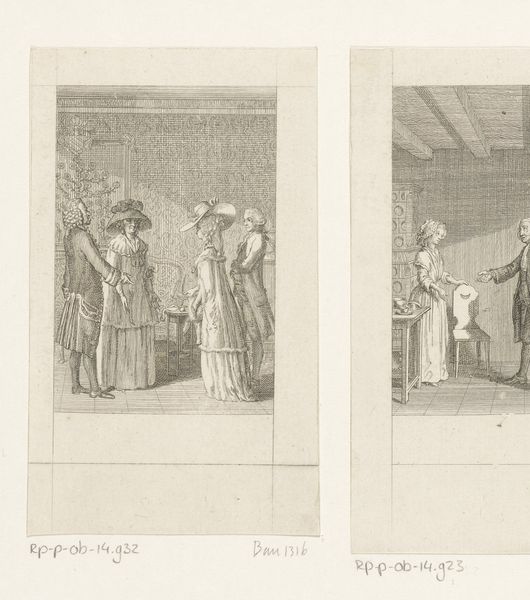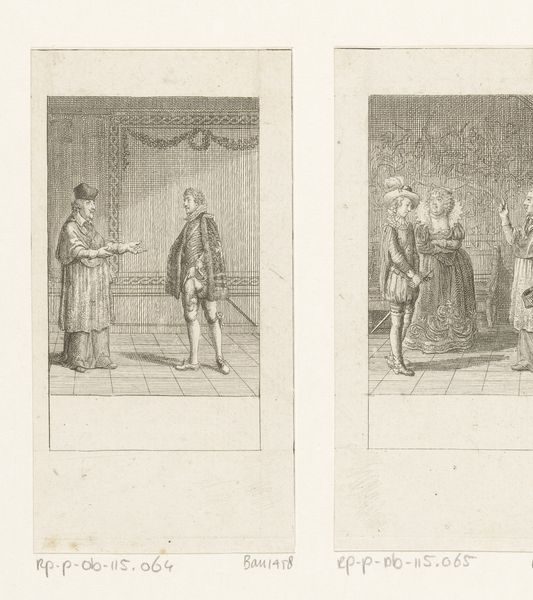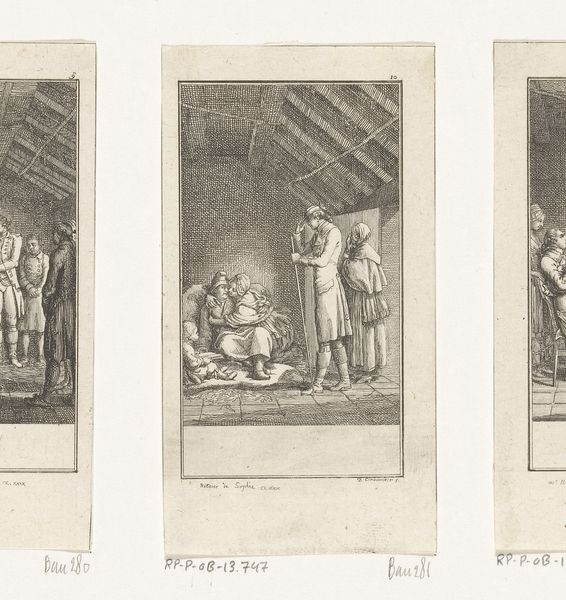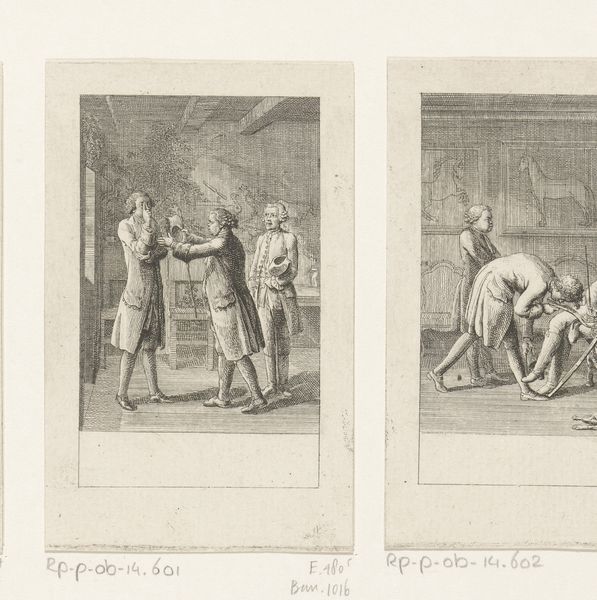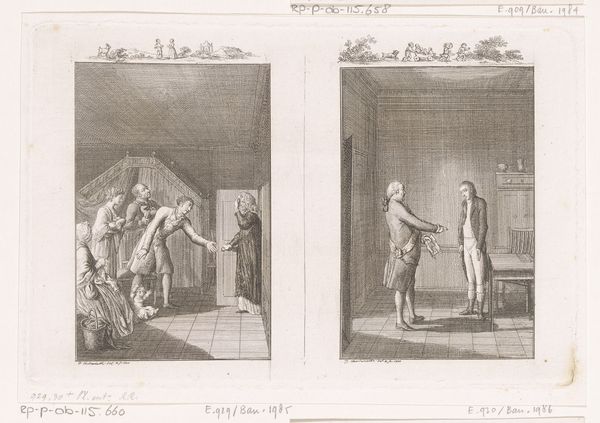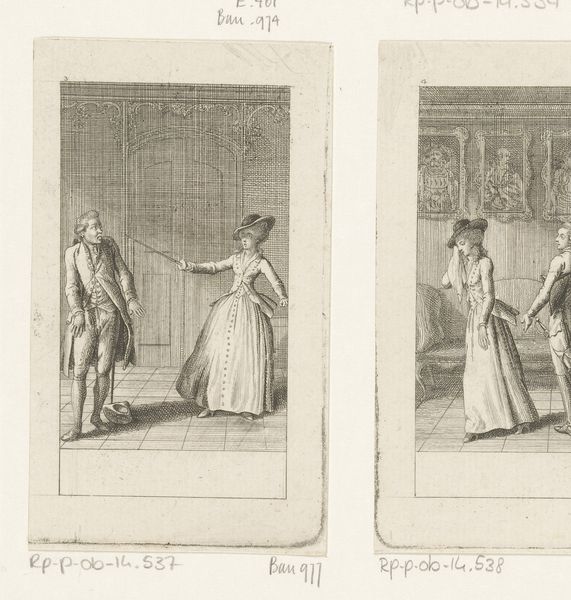
Dimensions: height 109 mm, width 67 mm
Copyright: Rijks Museum: Open Domain
Editor: This engraving, "Kapitein Wild slaat zichzelf voor het hoofd" by Daniel Nikolaus Chodowiecki, dates back to 1784 and is currently held at the Rijksmuseum. What strikes me is its almost theatrical quality; each panel seems to present a different act in a play. What historical contexts should we be aware of to properly understand the narrative? Curator: That's a keen observation about its theatrical quality! Chodowiecki was very interested in the public perception of morality and behavior. Engravings like these were widely circulated, serving almost like social media of their time. He uses the "Kapitein Wild" narrative, originally a play, to dissect societal failings of the era. Note how the Captain's dramatic gesture - striking his head - functions within each of these images. How does his posture relate to those around him in the scenes? Editor: I see, in one panel, he is separated from a woman by what appears to be guilt. And in the next, a different kind of exchange seems to occur altogether. The characters and settings suggest a critique of class dynamics. Are these scenes advocating for any kind of reform? Curator: Precisely! Chodowiecki's work actively participates in the enlightenment discourse. The piece visualizes this critique within accessible scenes from contemporary society. Consider the role of institutions like the church or government at that time and whether their impact or absence is reflected here. To what extent were moral examples available through them, and what other spaces might offer examples to society? Editor: I hadn't considered how mass-produced engravings played a role in shaping social discourse. It’s like Chodowiecki turned morality into a public spectacle for discussion. Curator: Exactly. The power of the printed image helped shape and disseminate contemporary values. That in itself makes Chodowiecki's work essential to understanding 18th century society. Editor: Thank you for bringing the context of this work to light; this helped me understand the way art reflects social awareness.
Comments
No comments
Be the first to comment and join the conversation on the ultimate creative platform.
